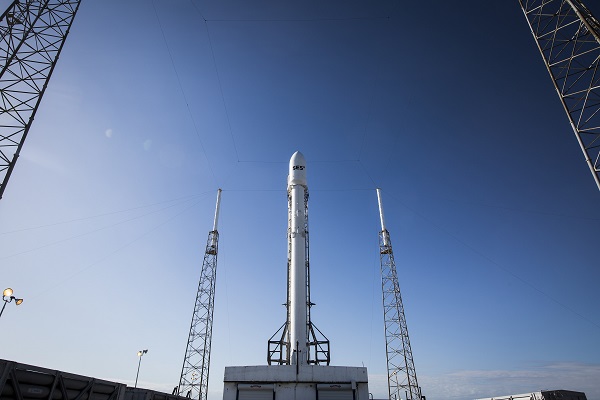
On Wednesday 24 February 2016 SES S.A. (NYSE Euronext Paris and Luxembourg Stock Exchange: SESG) announced that its SES-9 satellite was ready to be launched later the same evening; however during the final stages of the countdown and half way through the propellant load the launch was abandoned.
The satellite was to be launched on a Falcon 9 rocket from the Cape Canaveral Air Force Station in Florida. The launch was in fact abandoned one minute and 41 seconds before ignition. The launch window opened at 18:46:14 East Coast time (00:46:14 on 25 February Central European Time) and the spacecraft would have been deployed approximately 31 minutes after lift-off.
The SES-9 would have used a chemical bi-propellant thruster to complete the major post-launch manoeuvres whilst an electric propulsion system was to complete the journey to its orbit at 36,000km above the Equator. The on-orbit manoeuvring throughout the 15 year nominal lifetime of the satellite was to be done by electric propulsion.
The SES gave the official reason for the delayed launch as: “Out of an abundance of caution, the team opted to hold launch for today to ensure liquid oxygen temperatures are as cold as possible in an effort to maximise performance of the vehicle.”
SES-9 is to be co-located with another SES satellite, SES-7, at the prime orbital location of 108.2 degrees East, and will replace the NSS-11 spacecraft at that position. SES-9 was built by Boeing Satellite Systems International and is designed to operate for 15 years in geostationary orbit.
SES-9 is SES’s largest satellite to serve the Asia-Pacific region. It will provide unrivalled and significant expansion capacity to serve the buoyant and fast-growing video, enterprise, mobility and government sectors across Northeast Asia, South Asia, Indonesia and the Philippines.
No date has been set for the next launch attempt.
Photo provided by SES








